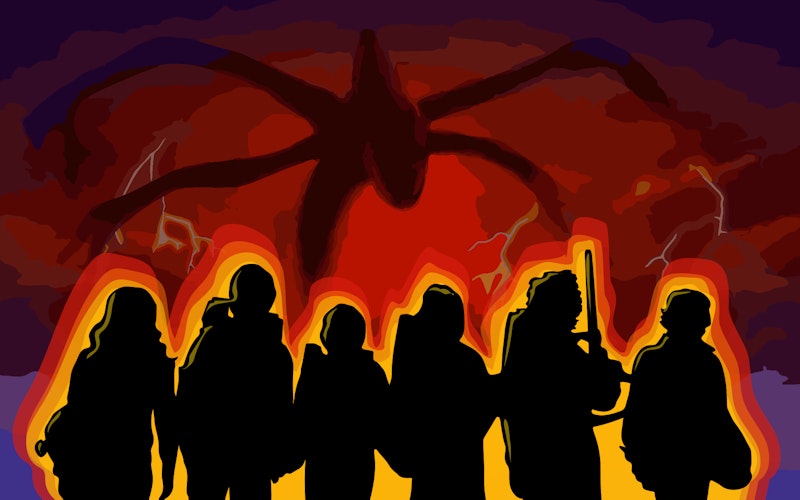
TV
Stranger Things: Christian Reflections on the Upside Down
I miss Barb.
A minor character from the first season of Stranger Things, Barb (Shannon Purser) met an awful end not long after unusual events began occurring in Hawkins, Ind. A young boy has gone missing, a girl with psychic powers has appeared, and a terrifying creature we will come to know as the Demogorgon is creeping around. As Barb, a socially anxious teenager at a high-school house party, sits alone by the backyard pool, her toes tapping at the water, a shadow looms up behind her. As the camera cuts away, we hear her scream.
We don’t see Barb again until the following episode. She’s at the bottom of the pool, which is empty—save for strange vines growing up the walls. She frantically tries to crawl out, but the sides are too high. When the camera cuts to a wide shot of the pool from above, it’s filled with water as before. Where is Barb, exactly?
If we now see through a glass darkly, Stranger Things takes us to the other side of the glass—only to confuse us more. Brothers Matt and Ross Duffer aptly titled their Netflix series, which is a 1980s-set ode to the Steven Spielberg movies and Stephen King novels of that era. A world familiar to us—if not from direct experience, then through those pop-culture properties—is broken open in unsettling ways. We’re forced to plunge through the placid surface of that pool and contend with what we find.
Is there ultimately a scientific, rational explanation for the goings-on in Stranger Things? Perhaps. But even if the events in the series can be explained away, that doesn’t detract from its spiritual pull. As the following essays in this collection show, Stranger Things taps into theological realities as well: the strangeness of our place on this side of Christ’s return; our longing for a salvific force outside of ourselves; and the powers and principalities that still hold sway, even in our supposedly secular world. What is it that we find when we step from Hawkins, Ind., into the Upside Down? Damnation? Salvation? Read on to see.
Of Fairy Tales and Stranger Things (Season One), by Stephen Woodworth
Stranger Things tells a fairy-tale story with a kingdom theology twist. Even while they offer entertainment and escape, fairy tales are infinitely valuable pedagogical tools.
The Horrible Familiarity of Stranger Things (Season Two), by Jill Moran
There is a need in Stranger Things to be saved, somehow, by something bigger than ourselves. Telling evidence of our need for God is laced into the fabric of each character, as they realize there is no earthly cure, no coping mechanism that heals.
Powers, Principalities, and Other Stranger Things (Season Three), by Claude Atcho
Despite its 1980s setting, Stranger Things mirrors the New Testament more than our modern day. The series counters our modern desire to understand the forces of Sin, Evil, and Death in exclusively intellectual terms.
Defeating the Darkness in Stranger Things (Season Four), by Julia York
With help from Kate Bush, the teens of Stranger Things refuse to let sin and shame define them. Season Four wields the power of its characters’ trauma, as Vecna uses their worst experiences against them.
Bonus Content
Spiritual Warfare (Stranger Things, Midsommar). On this episode of the TC podcast, Josh Larsen, Claude Atcho, and Joe George consider the ways Stranger Things and Midsommar evoke the spiritual warfare we see in the Bible.
Stranger Things: Grace in the Upside Down. On this episode of the TC podcast, Josh, Sarah, and Joe anticipate Stranger Things Season Four and celebrate our latest ebook, “Grace in the Upside Down.”
Topics: TV